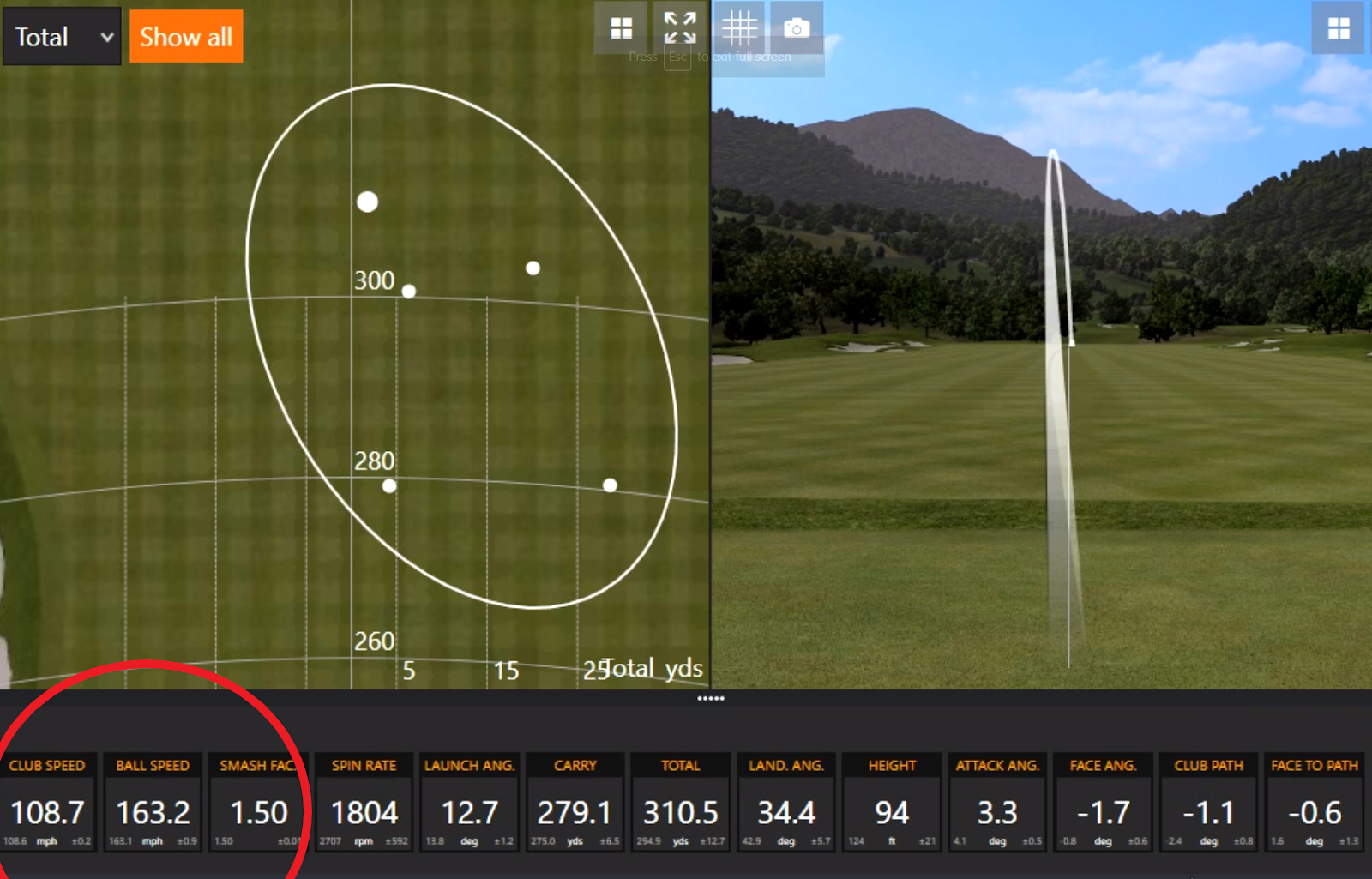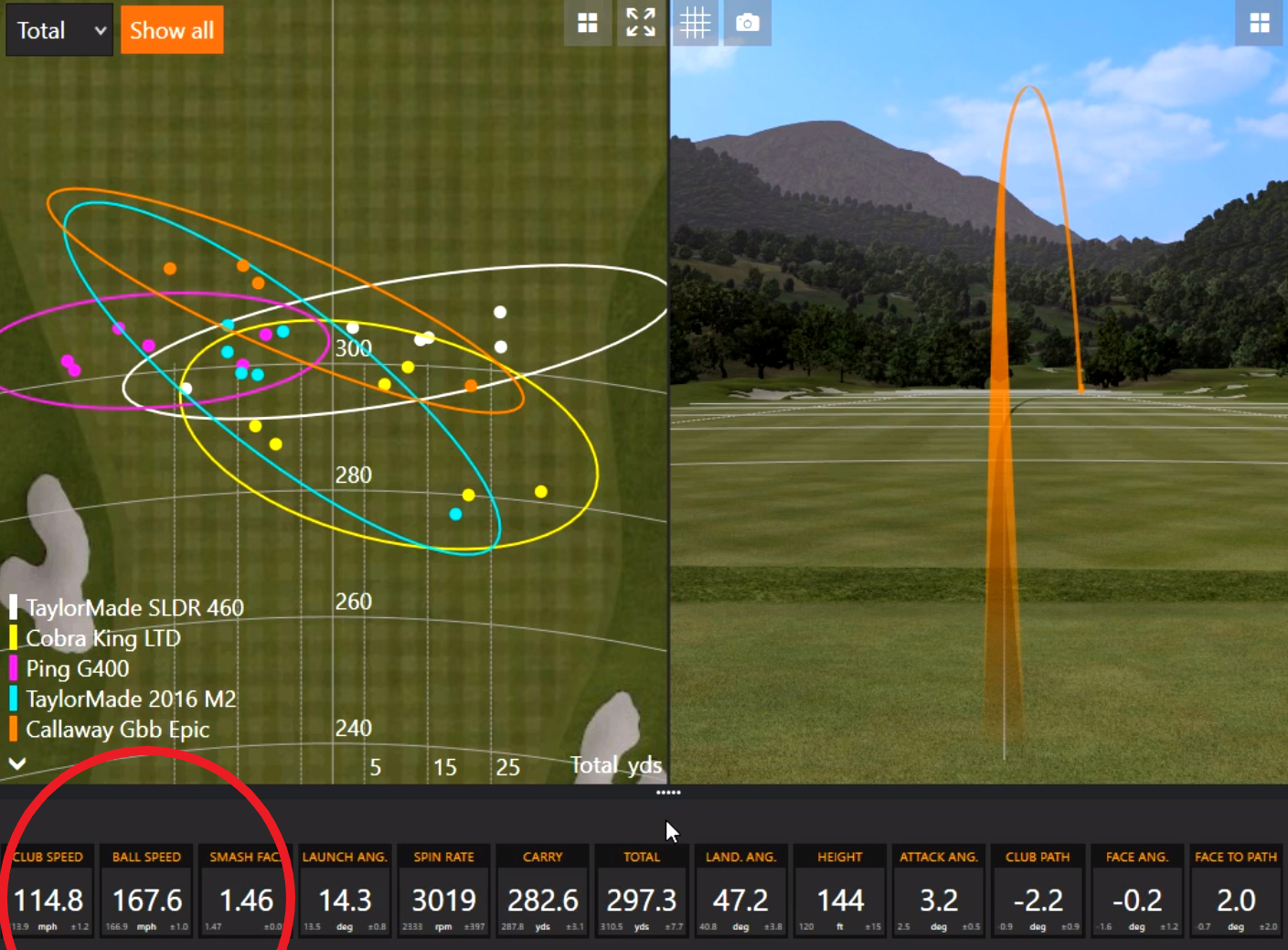Campbell's Corner: How club speed, ball speed, and efficiency work together

Campbell's Corner: How club speed, ball speed, and efficiency work together
February 27, 2020
By Thomas Campbell -- 2nd Swing master fitter
In a search for more distance, many golfers think the best way to hit the ball further is by swinging harder. While increasing club speed will increase potential ball speed and potential overall distance, there are other factors that are very important to help hit the ball further.
Improving efficiency, not club speed, is the easiest way to increase distance. Smash factor or power transfer ratio (P.T.R) is a measure of how efficient you are at transferring energy from the clubhead to the golf ball. Smash factor is defined as ball speed divided by club speed. The more ball speed generated, the further the golf ball will travel.
But what factors are especially important to improve a golfer’s efficiency? Three important factors in the golf swing that help improve efficiency are hit location, attack angle, and the face to path relationship. Contact made in the center of the clubface will always result in higher ball speeds. If contact is not made in the center of the face, sidespin is added to the golf ball, causing it to slice or hook while reducing the efficiency of the strike.
Meanwhile, if the attack angle is too steep, the ball can spin too much and decrease the amount of possible distance. The ideal attack angle is different for each club, with drivers being flatter while steeper for irons and wedges.
The face to path relationship at impact plays a major role in the amount of sidespin put on the golf ball and how high the ball will fly. If the face angle is open to a player’s path, loft is added to the club which will increase peak height and spin, ultimately resulting in less distance with a fade or slice trajectory. This flips when the clubface is closed to the path, generating a hook or draw trajectory with a lower peak height and lower spin.
In many cases, swinging harder only exaggerates inefficiencies. For example, increased clubhead speed for a player with a steep attack angle and open face angle will lead to even more spin, both backspin and sidespin, and cause the ball to go even further offline.
I like to think spin is king when it comes to distance, and all of these factors -- hit location, attack angle, and face to path -- affect the spin rate on the golf ball. Too many golfers try to swing harder in order to gain distance when they should really be working on those factors to lower spin and increase smash factor.
What is a good smash factor? On the PGA Tour, the average smash factor is 1.49, while your average amateur’s smash factor is about 1.44. The most efficient reading a golfer can register is 1.50 (that might vary depending on the launch monitor). Smash factors are typically around 1.35-1.40 for a 7-iron and around 1.25 for a pitching wedge.
The two shots below were hit and calculated with a Trackman 4 launch monitor. In the first example, the player was able to achieve a smash factor of 1.50 (163.2 ball speed divided by 108.7 club speed). This is maximum efficiency, and the reason the player was able to generate 310 yards off distance.


In the second screenshot below, the same golfer had a club speed of 114.8 mph, six miles per hour faster than the previous example. However, the ball went 13 yards shorter due to less efficiency at impact. The smash factor of 1.46 (167.6 ball speed divided by 114.8 club speed) is lower, indicating the player didn’t make contact in the center of the clubface. One other thing to notice is that the spin rate is 1200 RPM higher, reducing distance.


So why did the ball go 13 yards shorter in the second example even though the golfers club speed was
six miles per hour faster than the first example? We know the smash factor of 1.46 is less than the optimal 1.50, but what factors caused the efficiency to be so much lower?
- Hit location: We know that the shot in the second example had a lower smash factor, launched higher (14.3 degrees), had a higher spin rate (3019 RPM), flew higher (144 feet), and curved more to the right. Based on these factors it’s safe to say the player’s hit location was off-center, likely on the heel of the clubface.
- Attack angle: In this case, attack angle with both examples was almost identical (3.3 and 3.2 degrees) and thus barely impacted the efficiency. Hitting up on the ball with a positive attack angle is a great way to reduce spin and increase distance. If one of the shots had a much steeper angle of attack, something around 1.0 degrees, that shot would also see a noticeable increase in spin.
- Face to path: The second shot curved more to the right with a launch angle that was 1.6 degrees higher, spun 1200 RPM more, and flew 50 feet higher than the first example. Notice the face to path numbers on both. The face to path for the first example is -0.6 degrees, which is nearly dead square at impact, while the face to path for the second shot was 2.0 degrees open. Due to a more open clubface, the second shot launched higher, spun more, flew higher and curved more to the right.
Potential ball speed and, therefore, potential distance was left on the table in the second example, despite the higher club speed. If the player had achieved a 1.50 smash factor while maintaining the 114.8 mph club speed, the ball speed number could have exceeded 172 miles per hour and the total distance could have approached 330 yards.
While the popular opinion is that swinging harder is the best way to increase distance, that’s not always the case. The easiest way is to increase distance is by hitting the golf ball more efficiently and increasing that smash factor.